Dishwashing sponge holders
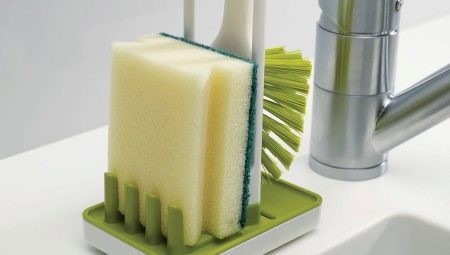
Sponge holders for washing dishes, as modern life shows, is not a whim, but quite a useful thing. Therefore, many people will be very interested in familiarizing themselves with an overview of holders for a kitchen sponge and detergent. On the Russian market there are "Frogs" and other models, but if you do not want to buy anything at all, you can do such a thing yourself.
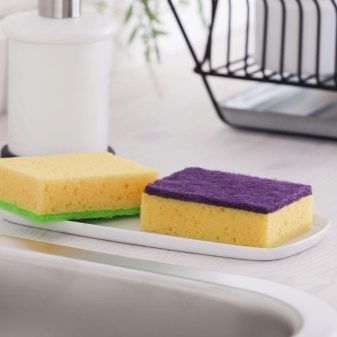
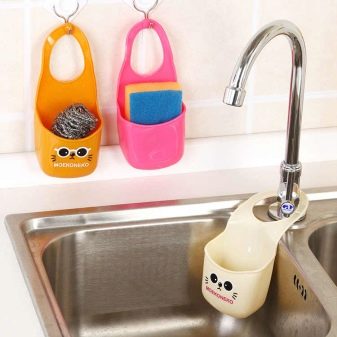
Advantages and disadvantages
It can be very useful to purchase (or make with your own hands) a sponge holder for washing dishes in the kitchen. This device makes the space much neater and more attractive than usual. It is immediately evident that decent and responsible people live in the house who know a lot about organizing their space.
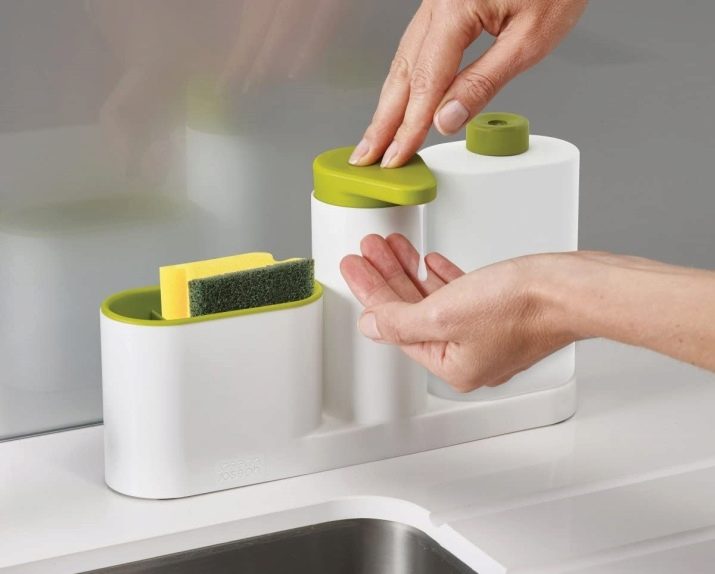
but in the case of a purchase, you will have to spend money, and in case of self-assembly - time and effort. However, this is such an insignificant disadvantage that it is worth mentioning only for the sake of order. The pleasant appearance of the organizer allows you to compensate for all emerging problems.

Species overview
The cheapest models are suspended on a tap (more precisely, on the mixer spout). They are quite comfortable and practical. But there is no place for the detergent, and it cannot be fixed in any way. Stationary versions will cost a lot. However, this problem is justified:
- more attractive appearance;
- the presence of a suspension for drying rags;
- the presence of a nest for a detergent mixture.
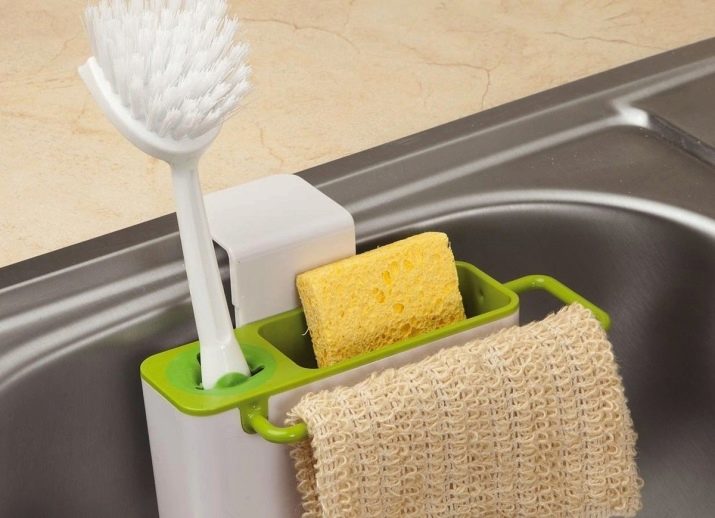
It should be emphasized that such products themselves need to be systematically cleaned. Suction cups can be attached to the sink walls. This allows them to "get lost" visually.
Variations with a dispenser and a tray look beautiful. We are talking about the use of accessories that are traditionally purchased for the bath - and, apparently, the majority of consumers have nothing bad to say about such a decision. The use of accessories made from natural materials helps to optimize the appearance even better.
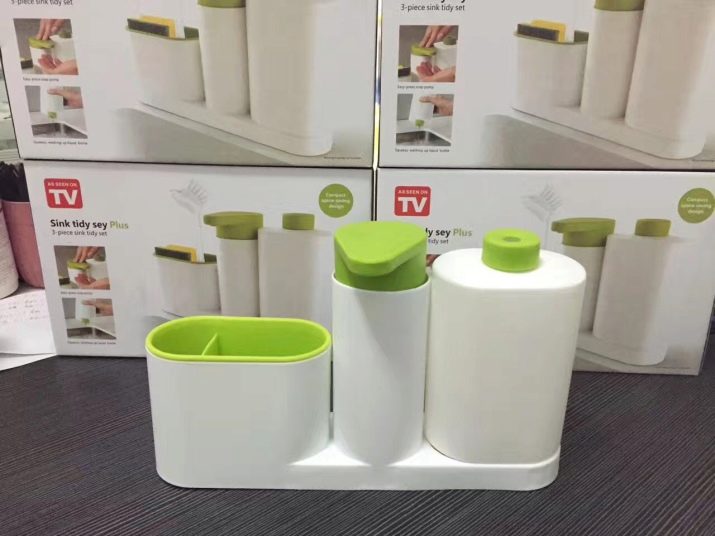
The sponge holder is sometimes made of stainless steel. The cost of such models is at least 200 rubles, usually attached to double-sided tape. The fact that they are perceptibly heavy is more of an advantage than a disadvantage. It is critical when selecting to look so that nothing bends, so that all corners are even. To stick the adhesive tape, you must first degrease the surfaces with gasoline or a building solvent.
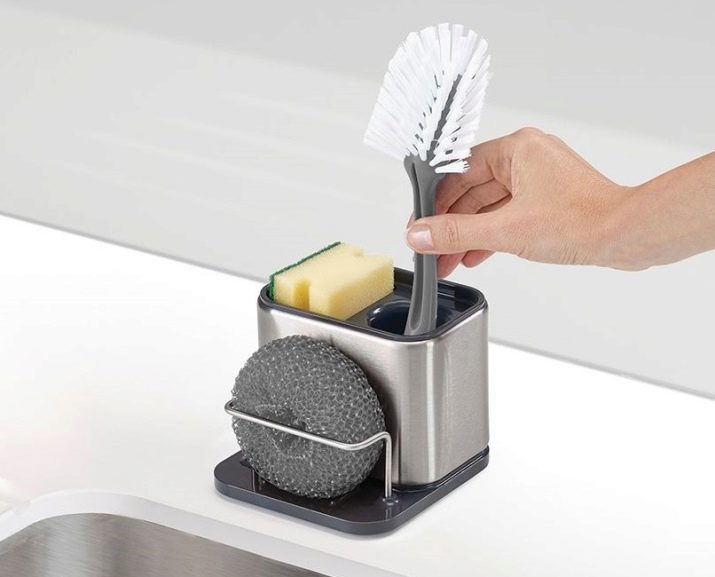
Connoisseurs consider the "Frog" model a good choice. Such a nice device is made of high quality ceramics. Specifications:
- gross weight - 0.228 kg;
- height - 95 mm;
- width - 80 mm;
- stand included;
- country of origin - PRC.
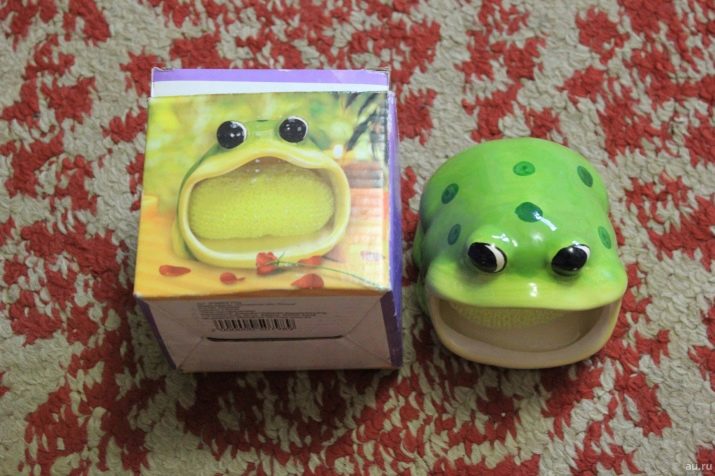
Another Chinese product from the Berossi brand is decorated in a mix color. Its height is 115 mm. Therewith, width features 88 mm. Packed weight - 0.045 kg. For the manufacture of the stand, plastic is used (food grade polypropylene).
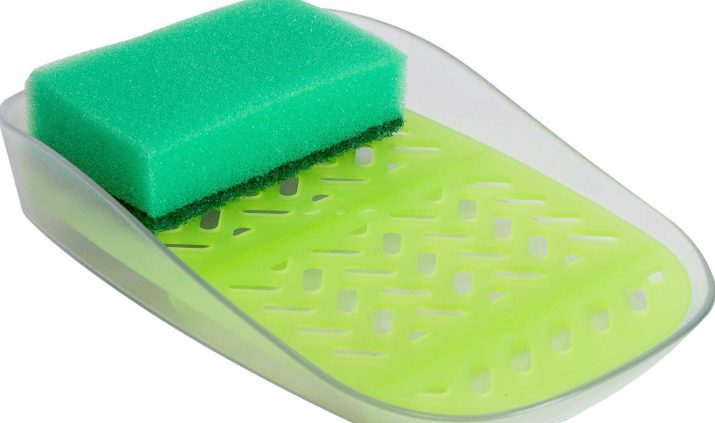
How to do it yourself?
A flip stand (or rather, a holder) for a detergent and a kitchen sponge is very easy to do with your own hands. This product is also suitable for regular soap. As a blank, it is advised to take a plastic container from under the shampoo. Another option is to use a pair of plastic canisters; they are cut into pieces and form a lockable box where sponges, household chemicals, and even rags can fit. But besides general ideas, it is useful to figure out how to get the right thing step by step yourself.

Shampoo bottles are again taken as a basis. The bottle will have to be pre-washed and rinsed thoroughly. The container is cut off from above. Important: plastic is easy to cut if you handle it carelessly.
Using a regular marker, felt-tip pen, or even just drawing a thick line with a pencil, mark the required height - apply a sponge and see how much is needed.
Next, the front upper part is cut off from the container. A circle is cut out behind. The ends of the place from which this circle was cut are cut off already in the form of a semicircle. Emery paper will help smooth out the sharpness of the edges. In the bottom, holes are punched (or fused with a nail heated on a stove, clamped in pliers, or with a soldering iron tip) holes for the outflow of water. All that remains is to put the wash tool in your pocket and hang the holder on the spout.

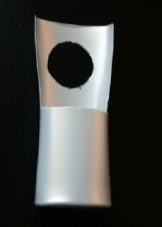


How to make a sponge stand with your own hands, see the video below.








